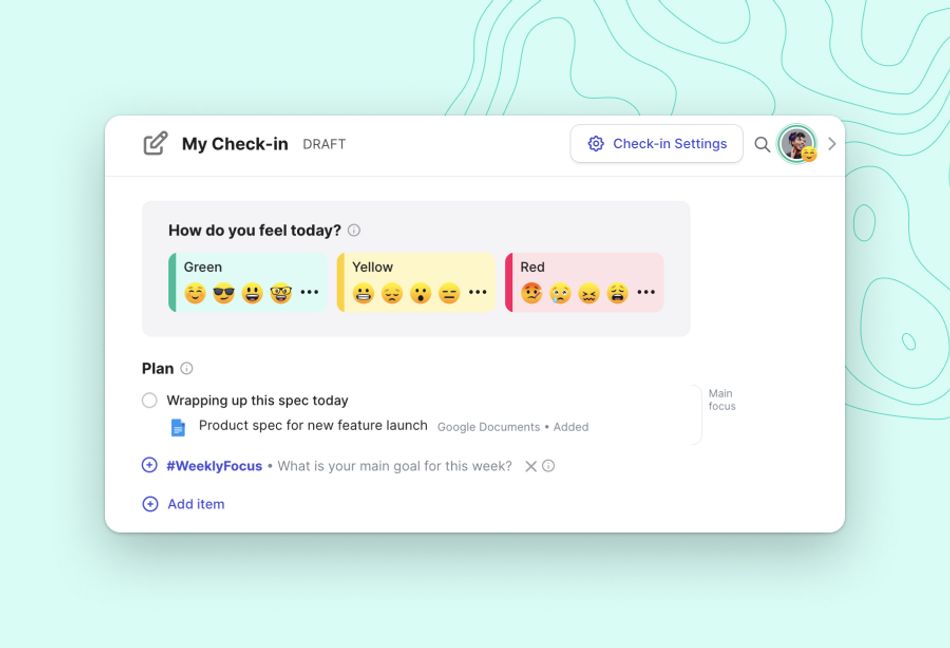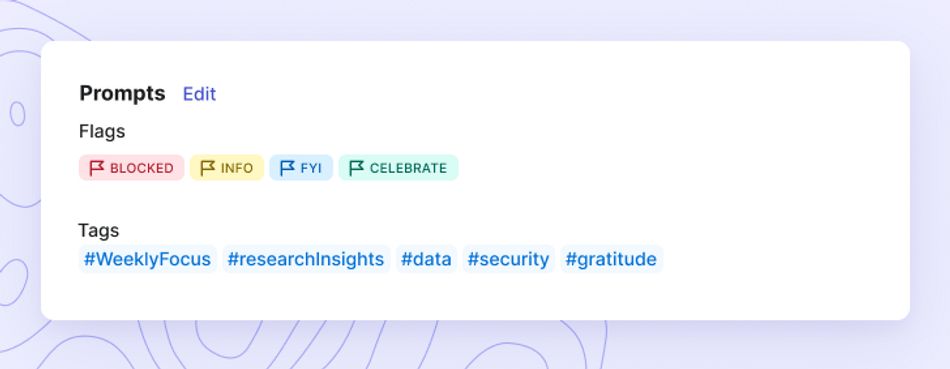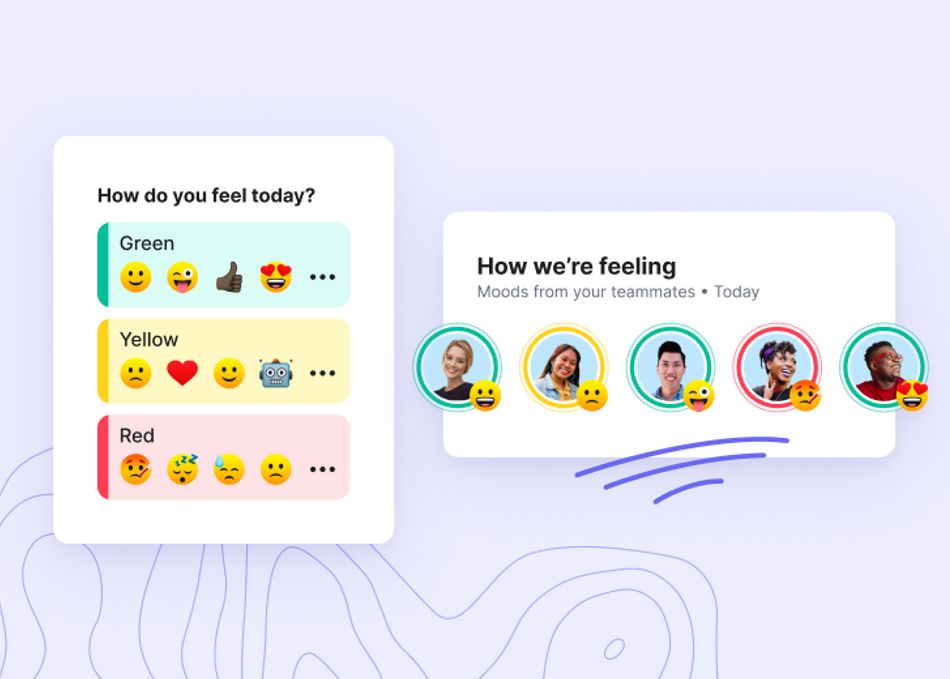
Company overview:
- Founded in 2016
- Woman-owned, family-operated startup
- 12 full-time employees
- 10 countries represented
- Website: https://www.calisbooks.com
Key metrics:
- 913 async check-ins published since January 2022
- 6 integrations connected
- Slack
- Asana
- Google Drive
- Google Calendar
- Stack Overflow
- GitHub
- 92% adoption of async standups (11 active users out of 12 full-time employees)

Growing up in Paris, Cali fell in love with books. When wanting to inspire this same enthusiasm in her own children, she found musical board books were a great way to engage kids at a very young age. The interactive buttons and multimedia format sparked a passion for books and reading that has stuck with them as they grow. That’s why in 2018, she left her job in investment banking to work full-time on Cali’s Books — a direct-to-consumer sound book company dedicated to introducing young children to the joys of reading.
In a world where noisy notifications and passive screen time are the norm, Cali’s Books is on a mission to create independent, safe learning experiences at scale. Working towards this mission requires not only top-notch storytelling, but also smooth team operations.
"We're bringing modern go-to-market strategies and ways of working to a very traditional industry. This allows us to create great experiences for our readers, from producing excellent content to offering delightful customer service, via reliable supply chains and rapid fulfillment."
– Michael Pursey, CTO of Cali’s Books
Between a family-operated business and a global startup
Cali’s Books straddles the line between a small family-operated business and a global D2C startup. To efficiently manufacture, market, and distribute their core product (6-page, interactive soundbooks for children), Cali and Michael have assembled a team of 12+ specialists from across the globe.
Their distributed and remote team includes folks from Canada, the United States, Argentina, France, England, Greece, and the Czech Republic — not to mention suppliers in China and software developers in Croatia and Ukraine.
Not only does their team represent incredible geographic diversity, but they also span a variety of functional roles, including:
- Social media marketing
- Website management
- Amazon distribution
- Illustration & design
- Content creation
- Voice recording
- Operations
- Editing
With so many time zones and functions to juggle, team coordination can get tricky.
As Michael notes, “It really is a remote working model. We don’t have an office and probably won’t have for a while. That’s why I was looking for Range in the first place, because there are a bunch of challenges that come with that. Everything can become a challenge when you’re remote and asynchronous.”
Why Range?
Before Range, the Cali’s Books team mostly exchanged ad-hoc messages in Slack to resolve questions and collaborate on projects.
While Slack was convenient for quick, one-off conversations, it wasn’t always enough to keep the Cali’s Books team in sync. Michael noticed that folks would often jump between channels in an unfocused way, exchanging noisy message threads without building the shared context and alignment they needed to move work forward.
To keep the whole team on the same page while working asynchronously, Michael started his search for a Slack app that would help the team declutter their day-to-day communication.

In his prior role as a consultant, he’d found that daily standups were the key to smooth collaboration, especially on distributed teams. That said, he’d never found a Slack standup bot that fully met his expectations. Some were “okay,” but they didn’t effectively “animate the standup,” which created more work for team managers.
With Range, the Cali’s Books team got more than just a Slackbot. They got a simple blueprint for async communication that increased cross-functional collaboration — even from a distance. Here’s how.
More than a Slackbot
Before the Cali’s Books team started using Range Check-ins, most of them had never tried daily standups before.
But after connecting the Range app to Slack, 92% of their 12-person team was able to start running daily async standups right away — with zero coaching.
“People have learned to do standups thanks to Range, even though they are on opposite sides of the globe. Range has lowered the barrier to entry to good working practices”
- Michael Pursey, CTO at Cali’s Books
Here are some of the async practices the team has built by running check-ins with Range:
1. Staying focused on what’s most important
A #WeeklyFocus prompt in Range makes it easy for every member of the Cali’s Books team to set a goal for the week and focus their efforts on the highest-impact work. Michael notes that “Nudging people to express themselves in terms of goals allows the conversation to rise to that level as opposed to all the tasks.” Plus, by integrating tools like Asana with Range, the Cali’s Books team can quickly drag and drop their most important work into their daily Check-ins, without getting lost in the details.

2. Communicating blockers
While the #WeeklyFocus prompt reminds the team to stay focused on goals, a “Blockers” prompt helps everyone build the habit of speaking up when they’re stuck.
Every Wednesday, each team member receives a Range reminder to share where they’re blocked. This helps ensure that the team takes care of unresolved issues before the end of the week. Especially on a globally distributed team, these automated nudges make it easier to keep up momentum and move projects forward.

3. Connecting with teammates cross-functionally
Since the Cali’s Books team started running async Check-ins with Range, they’ve sparked more connections across the business every day, both personally and professionally.
- Flags in Range give everyone visibility into day-to-day blockers. This has made it easier for people to tap into the whole team for help — even folks they don’t work with directly — rather than always turning to their immediate supervisor or coworkers.

- Range’s 300+ built-in icebreaker questions have helped the team build stronger relationships asynchronously, without creating extra work for managers.

- The mood-sharing functionality in Range Check-ins has made it easier to get a pulse on team wellbeing and morale. As an example, early in the pandemic, Cali and Michael were able to use mood updates to sense who wasn’t feeling well and needed time off.

Range’s impact on the Cali’s Books team lines up nicely with their company philosophy. Just as Cali’s Books is empowering young children to eliminate distractions and minimize passive screen time, Range is helping the Cali’s Books team cut the noise from their daily comms and create space for meaningful connections.
“Because everyone’s key goals, challenges, and accomplishments are out in the open, they’re getting conversations going outside of their immediate circle. This was the biggest aha moment for me. People are actually collaborating with each other, even though they don’t work together on a daily basis."
- Michael Pursey, CTO at Cali’s Books
The next chapter
Next up, Cali, Michael, and the Cali’s Books team will be working on a new kind of interactive book (stay tuned)! They are currently expanding their cross-functional team with software engineers to support this exciting project.
As they continue to deepen their usage of Range, they’ll be diving into features like the Team Dashboard to further centralize team information and drive async conversations that count.
Learn how your team can run async standups with Range







